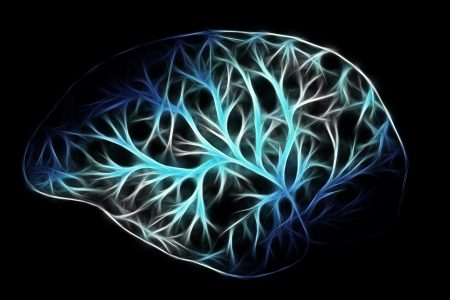- Here’s a list of conditions you can only hope will never affect anyone you know.
Yesterday, we brought you a story about a boy who was decapitated internally, an exceedingly rare medical condition. That story got us asking ourselves what other rare diseases and medical conditions there are.
As it turns out, there’s a whole bunch of them. The only connecting factor between them is that they’ve been known to ever affect a few people — or perhaps only a single person.
Just as a heads up, some people may find some of these conditions disturbing or unpleasant. If you’re sensitive to medical oddities, perhaps cute animals might be more up your alley.
With that said, let’s get to the 8 of the rarest human medical conditions ever encountered.
8. Hutchinson-Gilford Progeria
Hutchinson-Gilford progeria — often called simply progeria — is a rare but very sad medical condition. Since 1886, some 130 cases of progeria have been reported.
The condition affects newborns or very young children. It’s often nicknamed “premature aging” because its symptoms closely resemble those of advanced age.
The child’s skin will begin to look wrinkled and old, their hair will fall out, and they’ll develop protruding eyes and thin facial features. Later on, loss of eyesight, kidney failure, and heart problems will set in — just like with a venerable senior.
There is currently no known cure for progeria. Sufferers generally die before the age of 15.
7. Alice in Wonderland Syndrome
Alice in Wonderland syndrome (AIWS) is as strange and unusual as the book it’s named after. The condition causes bizarre hallucinations that affect the sufferer’s perception of their body and the surrounding objects.
It’s common for people with AIWS to observe objects as much larger or smaller than they actually are. They may also feel like their body is somehow out of proportion, in addition to perceiving touches or sounds that aren’t there.
One of the strangest things is that the people experiencing AIWS often know what they’re seeing isn’t right — but they’re unable to help it.
It’s hard to say exactly how rare AIWS is. It is rare, but some reports say up to 15% of migraine sufferers experience it at some point.
6. Kuru
The good thing about Kuru is that you (hopefully) never have to worry about catching it. The disease was limited almost entirely to the Fore tribe of Papua New Guinea, who traditionally cooked and ate their dead as part of their funeral rites.
Particularly, they ate the brain. However, the human brain can contain proteins called prions, which can damage the neural system.
As a result, the sufferers begin to experience symptoms such as tremors, uncontrollable laughter, and eventual loss of mobility and death.
The Fore haven’t practiced cannibalism for a long time and the prevalence of the disease has decreased greatly. Yet, it still exists and is not necessarily the result of cannibalism.
5. Lesch-Nyhan Syndrome
Whereas the Fore caught kuru from consuming others, the Lesch-Nyhan syndrome may force you to eat yourself. This condition is very rare and affects only males — but it can be very dangerous.
Lesch-Nyhan syndrome stems from the buildup of uric acid in the body. Excess uric acid hinders the functioning of the nervous system and can produce extreme aggression.
The cognitively impaired sufferers often release that aggression by injuring themselves. They may bang their heads on objects, bite their nails, or even gnaw off pieces of their own skin and flesh.
There’s no way to cure Lesch-Nyhan syndrome, but its symptoms can be treated. As a result, it’s possible for sufferers to live into adulthood.
4. Stone Man Syndrome
Stone man syndrome — officially called fibrodysplasia ossificans progressive — is one of the rarest and most horrifying diseases known to man. It’s known from about 801 cases and each of them was one too many.
People with stone man syndrome have a genetic mutation that affects their bodies’ self-repair system. Instead of healing injuries normally, their bodies repair any and all damage by forming bone.
Got a paper cut? Your body will grow bone to plug it. A bruise? Your body will begin turning the affected muscles into bone.
Eventually, the sufferer’s joints become locked and immobile due to excess bone growth. Perhaps the worst part is that there’s no way to treat stone man syndrome — any surgery would only result in more bone growth.
3. Water Allergy
Water allergy sounds like something a child who doesn’t want to take a bath came up with. But it’s a real condition that’s been observed in about 50 people.
People suffering from water allergy — also called aquagenic urticaria — develop hives and red itchy blotches when their skin comes into contact with water. Not only that, snow, sweat, or even tears can trigger the condition.
Neither doctors nor scientists know what causes water allergy. They guess that it might have something to do with the sufferers’ skin producing some irritating compounds when contacting with water, but no one’s really sure.
The only way to treat the disease is to simply avoid water in all its forms. Steroids and antihistamines may be effective in relieving the skin issues.
2. RPI Deficiency
Ribose-5-phosphate isomerase (RPI) deficiency is considered the second-rarest disease in the world. Only four cases have ever been encountered.
RPI is a vital enzyme for the human body’s metabolism. People suffering from RPI deficiency don’t have enough of it, which leads to multiple degenerative symptoms.
RPI deficiency patients suffer from muscle stiffness, seizures, loss of sight, and loss of white matter in the brain. Needless to say, the disease is fatal.
There is no cure precisely because RPI deficiency is so rare. Nobody knows what causes it, and as such doctors are unable to treat it.
1. Field’s Disease
Here it is —the rarest disease in the world. Field’s disease is known from only two cases, affecting twin sisters Catherine and Kirstie Fields.
The disease seems to be degenerating the Fields sisters’ nervous systems. They suffer from up to 100 painful muscle spasms a day and the condition has left them paralyzed and unable to speak without an electronic speech synthesizer.
Although doctors are constantly learning about the disease, it won’t help the Fields sisters as the knowledge comes from their deteriorating health. We can only hope their mysterious condition may provide help for those who might suffer from it in the future.
Hits: 0





















